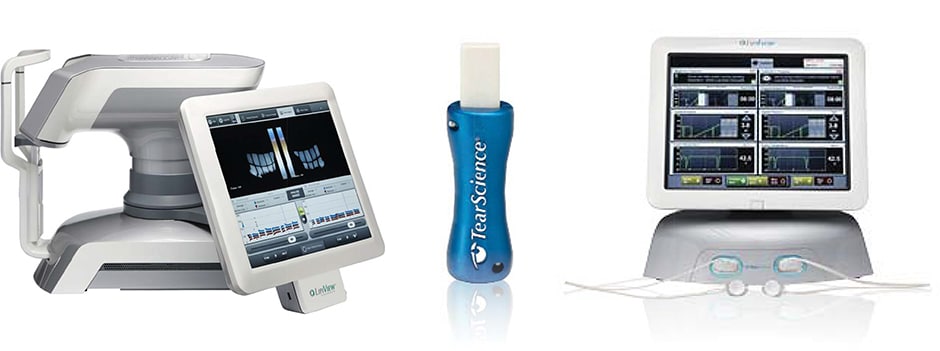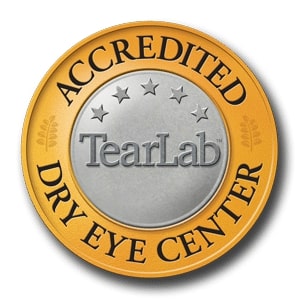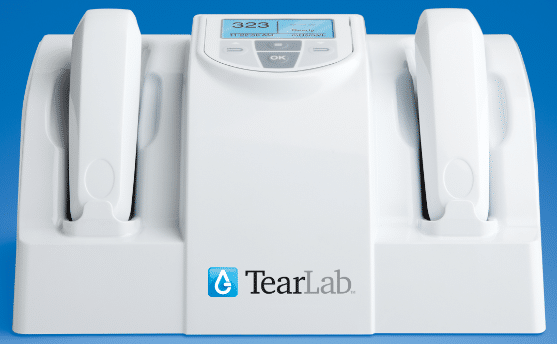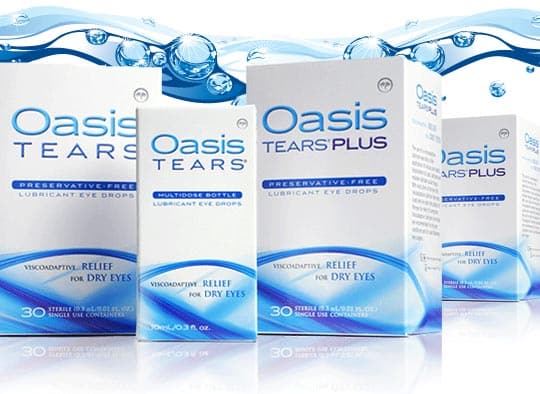With the dry, dusty and windy weather, dry eye is a common complication for many residents of Western Oklahoma. The prevalence of dry eye or dry eye syndrome increases with age. It is estimated that 1.68 million men over the age of 50 and 3.2 million women over the age of 50 in the US struggle with dry eye syndrome.

Dry eye symptoms also increase with activities such as driving, computer work, and playing video games.
OEI is commited to having the latest in dry eye evaluation and treatment options. We are proud to offer the only FDA approved in-office treatment for dry eye, the Lipiflow ®.
Definition
Dry eye is caused by poor tear production or poor tear consistency. A number of factors can contribute to dry eye, including environmental, medications, diet, and systemic disease. Symptoms of dry eye often include burning, stinging, watering, or feeling like something is in the eye. Dry eye syndrome can also cause fluctuating vision.
You may be more at risk for dry eye syndrome if you have a thyroid condition, a vitamin-A deficiency, Parkinson’s or Sjorgen’s disease, or if you are a woman going through menopause.
Diagnosis
OEI offers the latest in dry eye diagnostic technology with the Lipiview II ®. This instrument measures numerous important contributing factors in dry eye disease, including blink rate, quality of blink, and tear oil layer thickness. The Lipiview allows our doctors to take a picture of the glands inside the eyelid that contribute to tear production. During the lipiview evaluation, the doctor will also assess how the tear glands in your eyelid are functioning.
A number of tests can assist in the diagnosis and measuring the severity of dry eye syndrome. The Tear Lab ® measures tear osmolarity, which is the salt content of tears. A higher osmolarity often correlates with a poor tear film.

OEI also uses the Inflammadry® to guide in dry eye treatment. The inflammadry detects MMP-9, an inflammatory flag that is consistently elevated in the tears of patients with dry eye disease. Test results are achieved in about 10 minutes, allowing our doctors to create a customized treatment plan during the appointment.

The tear break-up time measures the amount of time it takes for the tears to evaporate from the surface of the eye after a blink. For this test, yellow dye is placed in the eye to stain the tears. A blue light is shined on the eye to watch the tears and the doctor times how long it takes for the evaporation to occur. Anything under 10 seconds can indicate dry eye.

The eye lids should also be inspected in patients that dry eye is suspected. Glands in the eye lid that help produce the oil layer of the tear film can become clogged, resulting in a poor tear film. The cornea should also be evaluated for areas of dryness.
Treatment
Punctal plugs are microscopic plugs that can be placed in the tear drainage canal to help with dry eyes. The plugs slow the tears from draining from the eye, which helps to keep the natural tears on the eye longer and the eye stays better lubricated. Punctal plugs are made of different materials including collagen, silicone, and hydrogel. Some plugs are temporary and dissolve in weeks to months, while others are permanent but can be removed if needed. Our Oklahoma Eye Institute doctors decide on the best material and size plug for each individual eye. The punctal plug is a quick and painless in-office procedure that is often covered by insurance.

Other treatment options include Restasis, the only prescription eye drop for dry eye. Oklahoma Eye Institute also offer Oasis tears ®, and artificial tear eye drop sold exclusively by eye professionals.

